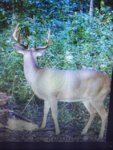No need to be sorry man. My comment was mostly relating to the psychology of the method as that's the key takeaway. The whole scent control, careful wind, and access is all centered around trying to remain undetected by the deer for short periods of time. The method we're discussing takes a completely opposite approach, which is don't try to hide from hundreds of thousands of years of evolution, but rather use it against him. Establish a pattern, you want him to know when you're there, and hopefully, through consistency, you want him to think he has you patterned. Then you switch it up and catch him acting on that pattern. When you switch it up that's when you flip back to the wind, scent, stealth tactic. You're attempting to use his greatest instincts against him instead of trying to hide from it. Deer have the advantage when it comes to sight, hearing and smell, we have the advantage when it comes to cognitive ability.
I'm not so sure it's their belly that is ruling their behavior but rather efficiency. We all know that it's in every animal's nature to complete a task in the simplest way possible with the least amount of effort. A deer in Ohio isn't struggling for food so I don't believe they're driven by hunger. There are AG fields not 300 yards from this bait pile which I am sure he visits, yet the majority of mornings and evenings he's at this bait. IMO they visit because it's a very easy way to load up that doesn't require much effort. That's why it's key for you to be close to their core area. Someone mentioned it earlier that you have to be close, you aren't going to pull him a great distance with any consistency.




